The 19th Century and Victorian Era of Turks and Caicos History
The Post-Loyalist Era in the Turks and Caicos
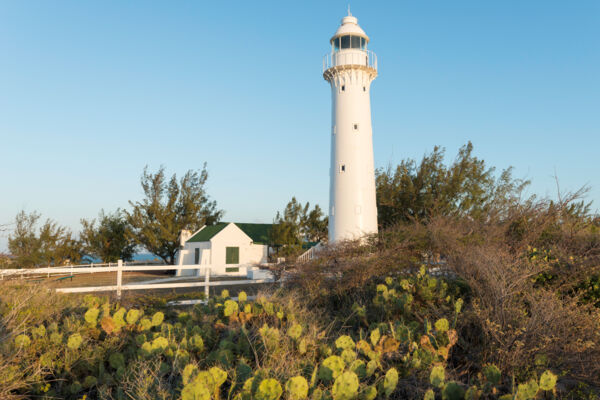
In the early 1800s, the cotton industry in the Turks and Caicos, which once held so much financial promise, saw a rapid decline. This was due to an overwhelming combination of pests and diseases (including the boll weevil), soil erosion, and hurricane damage. The great houses, infrastructure, and extensive fields, once symbols of relative success, fell into disrepair and abandonment.
During the 1800s era, the Turks and Caicos remained a British territory, yet the islands were administrated through the Bahamas from 1799. In 1874, due to the failure of the local Presidency, the Turks and Caicos was annexed to Jamaica. In 1962, Jamaica went independent, and the Turks and Caicos became its own Crown Colony, and local elections were held.
Emancipation and African Slaves
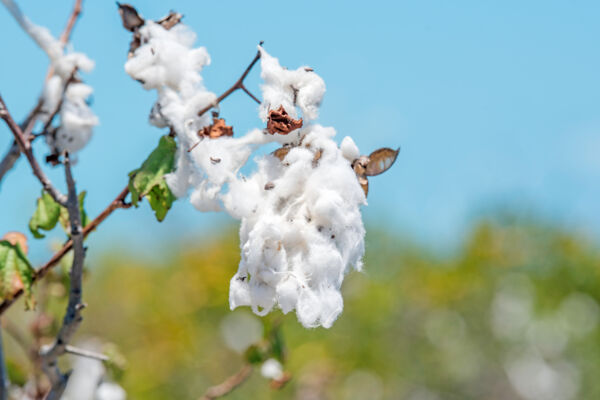
The history of the Turks and Caicos is closely tied to African slaves, and the majority of the current population can trace ancestry to either slaves brought to the islands for the salt and cotton industries, or those freed by the British from slave ships.
In the early 1800s, Britain began to put a stop to slavery. It was a long, drawn-out process that started in the late 1700s, yet the first official act was the abolition of slavery in Britain in 1807, which did not unfortunately apply to the British territories overseas and in the Caribbean. The 1833 Slavery Abolition Act emancipated slaves in most territories other than regions controlled by the East India Company, and Ceylon and Saint Helena.
A very simplified view of the origins and movements of the African peoples in the Turks and Caicos is that core groups of African slaves initially moved to the islands as with the Bermudians to Salt Cay and Grand Turk for the salt industry starting sometime in the mid to later 1600s, and with the Loyalist Americans to the Caicos Islands starting in the later 1700s. Due to the collapse of the cotton plantations in the early to mid-1800s, the majority of the slaves in the Caicos Islands migrated to the salt-producing islands or abroad to the Bahamas. A heavy influence on the African populations of the Caicos Islands was slaves freed by the British from Spanish and Portuguese slave ships that were either captured or wrecked in the islands. The best-known wrecks were the Trouvadore, the Esperanza, and perhaps a vessel referenced as the Gambia.
Further Development in the Salt Islands
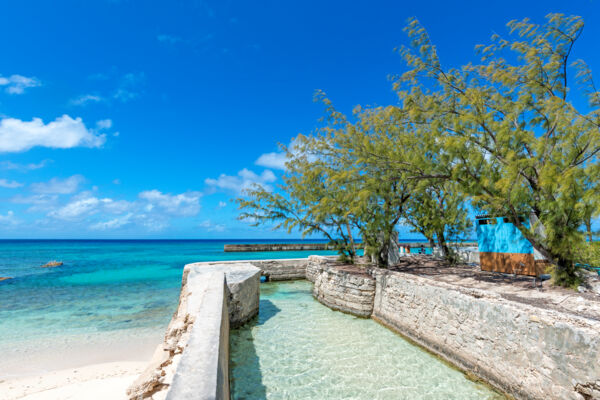
The sea salt industry epoch in the Turks and Caicos began well before the Victorian Era, and it could be strongly argued that a developed export industry existed during the days of the Lucayans prior to the arrival of Columbus, with trade to Hispaniola and possibly even further abroad.
The salt industry, which primarily functioned on Grand Turk, Salt Cay, and South Caicos, had its ups and downs due to hurricanes and commodity price fluctuations, yet throughout the later 1800s and early 1900s, it was the primary source of income into the Turks and Caicos.
Into the 1800s, the salt-producing islands began to reflect the wealth that the industry brought. Whereas the previous agricultural strongholds of North Caicos and Middle Caicos were stagnating due to the decline of the local cotton production, Grand Turk, Salt Cay, and South Caicos experienced the construction of new civic buildings and infrastructure. It was during this stable period that the settlements of Cockburn Town, Cockburn Harbour, and Balfour Town took shape.
The Grand Turk Lighthouse
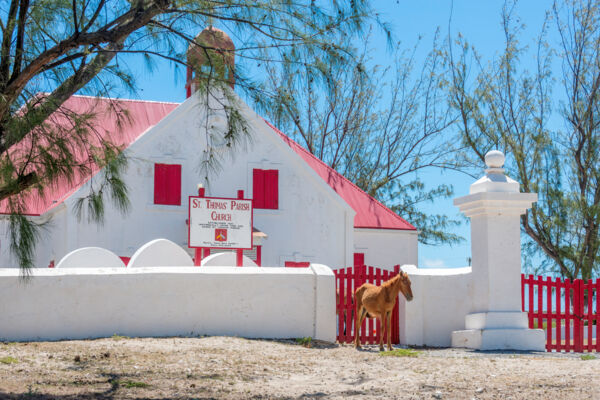
The Grand Turk Lighthouse is probably the best-known and most-recognizable structure in the Turks and Caicos. Yet as is the case of many of the public projects that occurred in the Turks and Caicos, it was long overdue when it was eventually built.
The Turks and Caicos is home to countless treacherous reefs that have claimed thousands of ships over the years, and likely contributed to the reputation of the Bermuda Triangle. North Reef, which was the reef that the lighthouse gave warning over, was particularly dangerous. A great number of vessels went down over the centuries, yet it took the sinking of the R.M.S Medina in 1842, which was the first British Royal Mail Service ship to be lost at sea, to galvanize the local and British governments to act.
The lighthouse was designed by Alexander Gordon and prefabricated in cast iron in England, and assembled in 1852. The lamp first burned whale oil, and then was converted to kerosene in 1943, and finally to electricity in 1971.
The same period also saw the introduction of an organized school system, several churches being built, as well as H.M. Prison and government departments.
Infrastructure Improvements
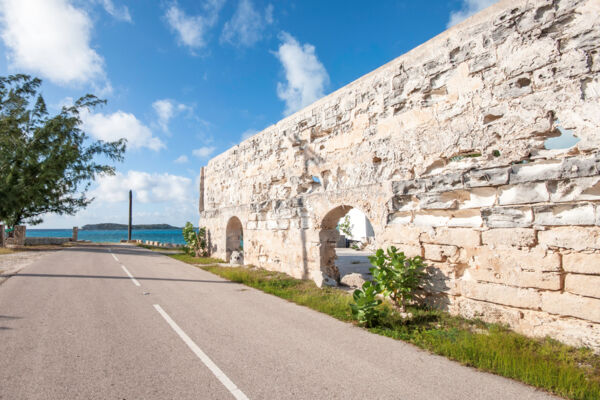
The mid-1800s also saw proposals and construction of some broader engineering works, including the dredging of the North Creek inlet on Grand Turk, and the building of seawalls and docks on Grand Turk and Deane’s Dock at Balfour Town on Salt Cay.
Much effort also went into the inlets, gates, and small canals that supplied ocean water to the salinas on the salt islands. Complex works, like the gates at Balfour Town and the Boiling Hole on South Caicos carefully allowed water to be controlled.
In 1896, the Turks and Caicos got its first international telegraph connection, which was laid through Bermuda and Jamaica.
New Industries in the Caicos Islands
After the decline of cotton planting in the Turks and Caicos, various crops were tried, albeit less formally, including sugar cane, coconuts, and sisal. Some marine product exports were also attempted, including the mainstay of dried conch, but also turtle shells, sea sponges, and canned lobster and turtle. Guano, sisal, and sponges were the most successful.
Guano Mining
One unique industry that provided income to the Caicos Islands was mining and exporting guano from caves. Guano (also called cave earth) is bat excrement, which was dug by hand and with pumps, and then shipped out for chemical and fertilizer uses.
It may not be initially apparent to the casual observer, yet the Turks and Caicos exhibits quite a bit of Karst action cave features. There are only about 10 known dry caves of size with horizontal extent, yet there are hundreds of sinkholes, blue holes, and underwater cave systems. Only the larger dry caves were mined for guano.
Conch Bar Caves on Middle Caicos is the largest dry cave in the Bahamian Archipelago, and today is the only one of two caves open for tourism. This extensive and beautiful system is one of the best natural attractions in the country. Nearby is Indian Cave, another beautiful cave that was mined for guano. During the excavations, Lucayan artifacts were recovered from both caves. Guano mining also took place on East Caicos, at several caves. Probably due to the apparent initial success of the guano digging on Middle Caicos, extensive infrastructure was built to facilitate the removal of the guano, including a rail system with carts pulled by donkeys, and elevated rock causeways to support the railways.
Sisal Planting
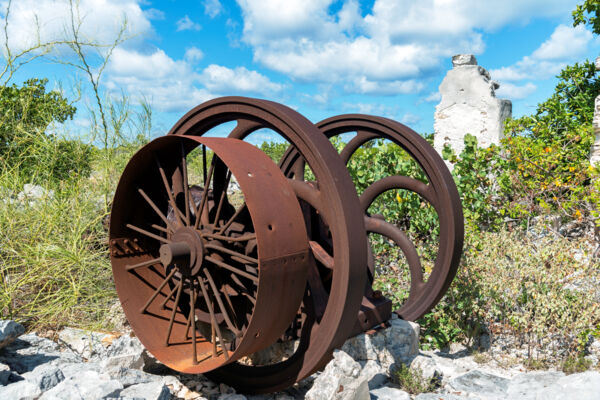
Another field crop that planters in the Turks and Caicos took interest in was sisal (also known as pita). This fibrous agave, like hemp, produces fibers that are used for rope and weaving, and the plant is more resistant than cotton to pests, drought, and poor soil. Sisal planting began in 1845 or 1846 at several of the old plantation sites on North Caicos and Middle Caicos, and later at new ventures on the islands of East Caicos and West Caicos.
The projects on East Caicos and West Caicos progressed quickly, which led to rail systems with carts pulled by donkeys, and small towns, Jacksonville and Yankee Town, on each of the islands. Both sites are abandoned today, and Yankee Town still has the hulks of an impressive Burrell steam traction engine, a giant kerosene engine, and sisal presses.
Processing sisal efficiently required several unique machines, including a “Fiber Decorticating Machine” to separate the fibers from the stalks, and giant iron screw presses to compress the fibers into bails for export. The remains of these huge and heavy cast iron machines can still be seen.
The sisal industry failed for the same reasons that agriculture is basically non-existent in the islands today: the dry and arid islands, very limited soil and freshwater resources, and lack of competitiveness with other regions. Sisal is easier to grow than cotton in the islands than many other tropical crops, yet it is very difficult to compete with southern Asian countries, with their comparatively unlimited water and arable land. On top of that, synthetic fibers and ropes further doomed the sisal industry in the Turks and Caicos. Production likely peaked around 1901 and 1904, yet did continue to a limited extent into the 1960s.
Sponge Collecting and Farming
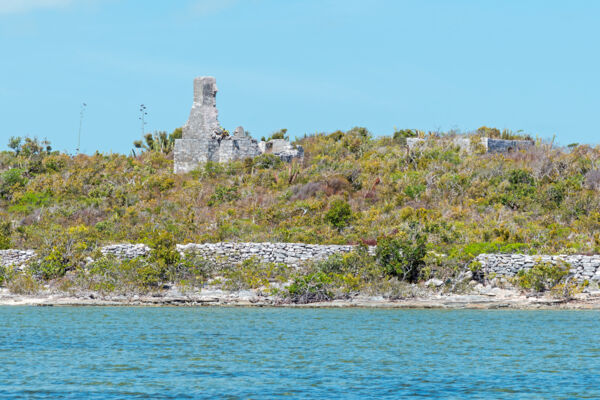
Providenciales and the adjacent small cays to the east for a brief period support another unique venture: the collection and cleaning of sea sponges. Like the cotton, guano, and sisal industries, there initially was great promise. In the late 1870s, sponge divers from the Bahamas began to operate in the Turks and Caicos.
John Dellis, a Greek diver, was the best-known name in the Turks and Caicos sponging industry, and had bases of operation on South Caicos, Dellis Cay (named after John Dellis), and at the Five Cays settlement on Providenciales.
Sponge farming, where small clippings of sea sponges were anchored to rock and concrete bases in shallow water, took place at Bell Sound on South Caicos and Chalk Sound on Providenciales. The Chalk Sound attempt was started in 1915 by George Silly (Silly Cay and Silly Creek are named after him), and saw a quarter million small cuttings planted. Unfortunately, the sponges took three years to grow to a sufficient size, and a disease (the great blight) impacted both natural and agricultural stocks. By the mid-1900s, depleted stocks and the introduction of artificial sponges eliminated the production in the Turks and Caicos.
Seafood Exports
Starting in the early 1800s, seafood exports began to be taken on a more serious level. It’s thought that dried conch and possibly other types of seafood were exported by the pre-Columbian Lucayan peoples to neighboring Hispaniola, yet larger-scale exports began in the 1800s, as dried conch to Haiti. In the 1950s, frozen conch exports to the US began.
Queen conch exports peaked in 1943 with 3,900,000 conchs exported, which, especially considering the much greater demand today, doesn’t bode well for the giant mollusk.
The canning of turtle and the Caribbean spiny lobster for export also took place on Providenciales, as did the export of turtle shells and conch shells for decorative purposes.
Wrecking
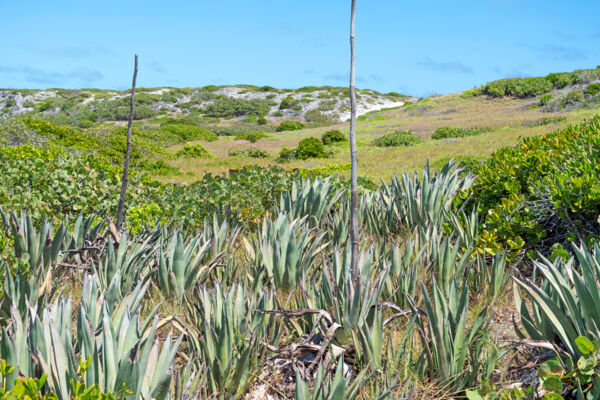
No economic history of the Caicos Islands in the latter 1800s can ignore the ship wrecking and salvaging industry.
Sites such as Birch’s Lookout on Providenciales maintained a constant lookout and a fleet of smaller ‘lighter’ boats, which could salvage cargos and vessel fittings. Compensation varied from simple bounties for assisting in the recovery of vessels or cargos, acquiring shares of cargo rescued, and commandeering fittings, sails, and supplies from doomed ships.
There’s no doubt that the wrecking industry did stray in terms of legality and morality, with deliberate attempts to wreck ships with false lights. Complaints were made by the American Consul at the time, accusing the islands of basically carrying on piracy, and one captain urged fellow seafarers to “use the utmost caution to avoid being deceived by any lights that may be shown from the Caicos Islands”.
Whaling
Yet another industry that lived for a few decades in the Turks and Caicos was the whaling of sperm whales and humpback whales for oil, which took place from Salt Cay. Whales, now greatly appreciated in the islands as gentle giants that offer unforgettable snorkeling experiences, migrate from the northern Atlantic to banks near the islands during the winter months. Today, Humpback whales, pilot whales, and Atlantic bottlenose dolphins are the only marine mammals commonly spotted near the Turks and Caicos, yet manatees and sperm whales were recorded to have been common in previous centuries, and were likely hunted to extinction.
Whaling stations once stood at Taylor Hill and Whale House Bay on Salt Cay, the ruins of which can still be seen today.
Hurricanes
A common theme in Turks and Caicos history is the occasional devastating hurricane, which would effectively destroy or severely impact industries. The islands have been lucky over the last few decades, as even category 5 hurricane strikes have been recovered from relatively quickly, yet in the past, major storms would set the country back immeasurably. Notable hurricanes include The Great 1866 Storm, which claimed 20 lives, destroyed over 871 homes, and washed away more than a million bushels of salt, a devastating hurricane in 1945 that took the lives of 79 fishermen, and the 1960 Hurricane Donna, which caused tremendous storm surge flooding in the Caicos Islands, opened new channels in the cays between Providenciales and North Caicos, and sunk all but one sloop in the islands.
